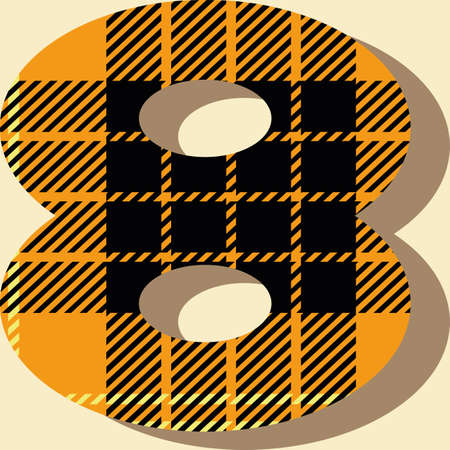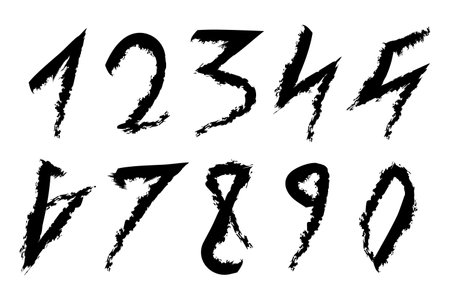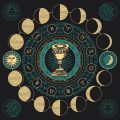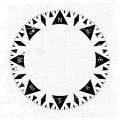Introduction to Runes in the British Context
The enigmatic runic alphabet, with its angular characters and age-old mystique, has long captured the British imagination. Originating from early Germanic tribes, runes found their way onto British soil during the Anglo-Saxon period, leaving behind a legacy etched into stone crosses, jewellery, and manuscripts. While often associated with Scandinavia, runes became an indelible part of Britain’s own historical tapestry—particularly in regions like Northumbria and Mercia, where inscriptions still whisper tales of ancient beliefs and identities. Over centuries, these symbols have morphed from practical tools of communication to vessels of magical meaning and personal symbolism. Today, the enduring allure of runes persists across the UK, not only in academic circles but also within modern pop culture—from fantasy literature and film to tattoo art and neopagan practices. Understanding how each rune was interpreted historically and how it resonates today offers a uniquely British perspective on this ancient script, blending tradition with contemporary curiosity.
2. The Anglo-Saxon Futhorc: A Unique British Rune Set
When considering the British interpretations of runes, one cannot overlook the distinct path taken by the Anglo-Saxon Futhorc. Unlike its Scandinavian counterpart, the Elder Futhark, the Futhorc evolved within the cultural and linguistic milieu of early medieval Britain. This adaptation reflects not only a shift in phonetics and dialects but also a nuanced reinterpretation of each rune’s meaning and use. The Futhorc expanded from the original 24 characters to as many as 33, accommodating Old English sounds and regional identities.
The Evolution of Runes in Early Britain
The arrival of runic writing in Britain likely accompanied Germanic settlers in the 5th century CE. However, rather than simply adopting continental practices, Britons developed a script that mirrored their unique blend of languages and beliefs. The Anglo-Saxon Futhorc became a tool for both magical inscription and mundane record-keeping—found on objects as varied as jewellery, weapons, and boundary markers.
Key Differences Between Elder Futhark and Anglo-Saxon Futhorc
| Feature | Elder Futhark | Anglo-Saxon Futhorc |
|---|---|---|
| Number of Runes | 24 | 28–33 (varied regionally) |
| Main Use Period | 150–800 CE | 400–1100 CE |
| Linguistic Adaptation | Proto-Germanic | Old English/Anglo-Frisian |
| Symbolic Evolution | Pan-Germanic meanings | Distinctly British interpretations |
Regional Variations Within Britain
The flexibility of the Futhorc allowed for remarkable regional diversity. In Northumbria, for example, additional runes represented unique vowel sounds, while Kentish inscriptions sometimes exhibited hybrid forms with Latin letters. This adaptability speaks to a broader British ethos: pragmatic yet innovative, rooted in tradition but always open to local reinvention.
Modern Relevance and Interpretive Legacy
Today, the Anglo-Saxon Futhorc offers rich material for those interested in British esoterica and historical linguistics. Its symbols have been revived in contemporary British paganism and folk magic circles—not just as relics of a distant past but as living links to evolving notions of identity and belonging. As we explore each rune’s meaning throughout this article, it is essential to appreciate how British contexts shaped their symbolism—and continue to inspire reinterpretation today.

3. Symbolism and Folkloric Meaning
To truly appreciate the British interpretations of runes, one must delve into their symbolic resonance as understood across the isles. While runes are often associated with Norse and Germanic traditions, their migration to Britain brought about a distinctive tapestry of meanings—shaped by Celtic sensibilities, Anglo-Saxon storytelling, and local mythic landscapes. Each rune not only held its original essence but was also reimagined through the prism of British folklore. For instance, Fehu, initially signifying cattle and wealth, became entwined in tales of prosperity and luck among rural communities in Cornwall and Yorkshire. Algiz, commonly seen as a symbol of protection, was adopted by folk healers and wise women in the borderlands as a ward against mischievous spirits and fae mischief. In Welsh tradition, certain runes were linked to Arthurian legends or Druidic rites, reinforcing their mystical status. Even today, echoes of these interpretations persist: runes etched onto amulets or woven into local customs during solstice celebrations reflect a blend of imported symbolism and homegrown meaning. This uniquely British perspective allows each rune to act as both a bridge to ancient wisdom and a vessel for evolving cultural identity—a testament to how tradition can be both preserved and reinvented.
4. Rune Use in British History
While the runic alphabet is often associated with Scandinavia, its influence and usage found fertile ground in early British culture, particularly during the Anglo-Saxon period. The adoption of runes on these shores wasn’t merely a matter of script—it was a blend of language, magic, and symbolism embedded into daily life and spiritual practice. Examining the documented historical uses of runes across Britain unveils a fascinating interplay between imported tradition and local adaptation.
Archaeological Finds: Inscriptions Across the Isles
The tangible legacy of runes in Britain is most vividly preserved in archaeological discoveries. Runes have been found inscribed on various objects, ranging from monumental stones to everyday artefacts. Some notable examples include:
| Site/Find | Description | Date |
|---|---|---|
| Ruthwell Cross (Scotland) | Stone cross with both Christian imagery and runic inscriptions; features excerpts from “The Dream of the Rood.” | 8th century |
| Franks Casket (Northumbria) | Anglo-Saxon whalebone chest carved with mythological scenes and runic texts. | Early 8th century |
| Lindisfarne Stones (Northumberland) | Gravestones with personal names carved in runes. | 7th-9th centuries |
| Blythburgh Charm (Suffolk) | Lead tablet inscribed with a healing charm in runic script. | 10th century |
Charms, Rituals, and Everyday Magic
Runes were far more than an archaic writing system; they played an active role in magical and ritualistic practices throughout British history. Archaeological evidence indicates that runes were sometimes inscribed onto amulets or metalwork as protective charms. These inscriptions were believed to ward off evil, ensure safe passage, or secure good fortune—a practice that echoes through Old English texts and oral tradition alike.
Linguistic Echoes in Literature
The literary corpus of early Britain offers further insights into how runes permeated local consciousness. Works like “Beowulf” reference rune-carved swords and talismans, while riddles and poems found in the Exeter Book show awareness of rune symbolism among educated elites. Notably, the Old English “Rune Poem” serves as a mnemonic device, listing each rune’s name alongside its symbolic meaning—bridging practical communication and esoteric knowledge.
The Enduring Legacy in Modern Britain
The British approach to runes has always been layered—part script, part symbol, part spell. This multifaceted history not only underscores Britain’s place within the broader Germanic world but also highlights unique adaptations that shaped local identity. Today, these ancient markings continue to intrigue scholars, inspire artists, and empower those who seek connection to the mystical threads woven through British heritage.
5. Modern British Relevance and Revival
Far from being relics of a distant past, runes are enjoying a remarkable renaissance across Britain’s contemporary cultural and spiritual landscapes. This revival is not merely nostalgic; rather, it reflects a dynamic reinterpretation of ancient symbols in ways that resonate deeply with twenty-first-century British sensibilities.
Runes in British Spiritual Practices
Within modern British spirituality, runes have found new life among neo-pagan groups such as Heathens and Wiccans. These communities draw upon the historical roots of runic alphabets to inform their rituals, meditation practices, and divinatory systems. Runes are often used as tools for self-reflection, intention-setting, and connecting with ancestral heritage—a powerful way to reclaim identity in a rapidly globalising world. The distinct symbolism of each rune provides a meaningful language through which practitioners interpret life’s complexities, making them highly relevant for those seeking personal or spiritual growth.
Artistic Expressions and Creative Communities
The visual allure of runes has also inspired a surge in creative engagement across Britain. Artists, graphic designers, and crafters incorporate runic motifs into everything from jewellery to tattoo art, blending ancient forms with contemporary aesthetics. In public art installations and music subcultures—particularly within folk and metal genres—runes become emblems of alternative identity, offering a sense of continuity with the past while celebrating innovation.
Runes in Education and Heritage Projects
Educational initiatives throughout the UK increasingly spotlight runes as part of heritage studies and interdisciplinary learning. Museums and historical societies host workshops on runic inscriptions, fostering appreciation for Britain’s early medieval history. In classrooms, teachers use runes to spark discussions about language evolution, symbolism, and cultural transmission—demonstrating their enduring relevance beyond mere curiosity.
A Bridge Between Tradition and Contemporary Subcultures
Finally, runes have become touchstones for British subcultures seeking roots and authenticity. Whether through the lens of neo-pagan spirituality or creative experimentation, these symbols are continually reimagined to suit present-day narratives. This ongoing revival demonstrates how the ancient script not only survives but thrives—as both an artistic inspiration and a living spiritual tool—within the ever-evolving tapestry of British culture.
6. Contemporary Perspectives: Debates and Misconceptions
The resurgence of interest in runes across Britain has sparked lively debates, both academic and popular, concerning their meaning, authenticity, and place in modern British identity. This contemporary engagement is marked by a tension between scholarly interpretations rooted in archaeological and linguistic evidence, and more esoteric or commercial appropriations that often blur historical accuracy with personal or ideological narratives.
Modern Debates: Authenticity versus Appropriation
One ongoing debate centres on the authenticity of rune use in the modern British context. While some view runes as an integral part of early English heritage—connected to the Anglo-Saxons and wider Germanic traditions—others question the legitimacy of contemporary practices that draw on Norse or pan-European symbolism without clear historical precedent in Britain. This raises important questions about cultural ownership, adaptation, and the risk of homogenising diverse traditions under a single runic banner.
Popular Misconceptions
Misunderstandings abound regarding what runes represent. In British pop culture, runes are frequently conflated with magical scripts or used as generic symbols for mystery, power, or ancient wisdom. This sometimes leads to the mistaken belief that runes functioned primarily as tools for divination or magic, overshadowing their original use as an alphabet for communication and record-keeping. Additionally, there is a tendency to romanticise the Viking or Druidic connection to runes, often overlooking their distinct development within the Anglo-Saxon tradition on British soil.
Responsible Engagement with Runes Today
To engage responsibly with runes in the British landscape requires an appreciation for both their historical context and evolving meanings. Scholars and enthusiasts alike are encouraged to approach runes not just as relics of the past but as dynamic symbols that can foster cultural reflection and dialogue. Respectful engagement means acknowledging complexities: avoiding reductive interpretations, challenging stereotypes, and recognising how runes have been misused at times for exclusionary or extremist ideologies. By promoting informed discussion and critical curiosity, we can ensure that runes continue to enrich Britains cultural tapestry while honouring their origins and significance.


